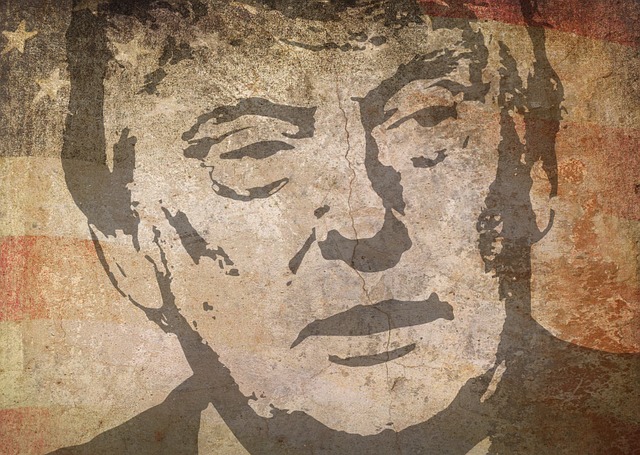 Trump’s battle-cry has been “jobs, jobs, jobs,” and that’s had bond traders screaming “sell, sell, sell.”
Trump’s battle-cry has been “jobs, jobs, jobs,” and that’s had bond traders screaming “sell, sell, sell.”
Why? Because a Trump-pumped economy suggests:
- more U.S. government borrowing (greater bond supply is bullish for rates)
- more business and consumer borrowing (higher demand for money is bullish for rates)
- more inflation risk (a haunting thought for bond investors, and bullish for rates).
Meanwhile, the world’s monetary kingpin, Janet Yellen, says the U.S. labour market is the strongest in almost a decade. That makes it even easier for a hot economy to spark inflation.
It’s no wonder then that bonds have sunk like a mob-snitch in the East River. And when bond prices fall, mortgage rates do the opposite.
So Now What?
 The Donald’s upset win has raised the price of money to the tune of 40 basis points on Canada’s 5-year bond. And like clockwork, 5-year fixed mortgage rates have tracked yields higher.
The Donald’s upset win has raised the price of money to the tune of 40 basis points on Canada’s 5-year bond. And like clockwork, 5-year fixed mortgage rates have tracked yields higher.
Mortgage watchers everywhere are now wondering if this rate run-up has legs.
Needless to say, the answer is a puzzle and we don’t have all the pieces. The only sure bet is that Trumpulus (Trump Stimulus) could take multiple quarters to: (1) pass in Congress, (2) rev up the U.S. economy, (3) kickstart growth in Canada and (4) lift our rates in a meaningful way.
Meanwhile, we’re all left to wonder whether:
- Canada’s housing market lays an egg (rate-bearish, if so)
- Oil will keep rallying (rate-bullish, if so)
- The U.S. and Canada get in a trade spat (rate-bearish)
- A deflated Canuck-buck can spur non-energy exports (rate-bullish)
- Some new global crisis waits in the wings (rate-bearish).
Barring some extreme event(s), rates will not be soaring in 2017. Nor will they dip to new lows—at least not before the Presidential Apprentice makes the economy “great again.”
It’s what could happen from 2018 to 2021 that should interest mortgagors the most.
How to Play the Trump Bump
 Tax cuts and government spending never energize economies overnight. So while rates could climb further in the first half in anticipation of Trumponomics, it’s the medium-term rate trend borrowers have to worry about.
Tax cuts and government spending never energize economies overnight. So while rates could climb further in the first half in anticipation of Trumponomics, it’s the medium-term rate trend borrowers have to worry about.
If you believe the bond market, that trend is no longer down.
But rates never ascend in a straight line. We’re going to see lots of pullbacks—pullbacks that make people second-guess whether Trump’s hype is just that.
But none of this changes the optimal strategy if you’re buying a home, refinancing or renewing this spring. In that case, borrowers need to get a rate hold on the double. Locking in a rate for 120 days secures your rate till May.
Quick tips on rate holds:
- Only a minority of lenders hold rates for 120 days, and fewer yet do it for refinances and switches (the longest rate holds are for purchases).
 You can usually reset your rate-lock if rates drop before you close. So keep an eye on this chart. If your lender allows multiple resets, look for ~20 bps drops in the 5-year yield. Every time that happens, ask your broker or lender if rates have fallen. Believe it or not, there are some lenders and brokers who won’t tell you if rates decline after you’re approved.
You can usually reset your rate-lock if rates drop before you close. So keep an eye on this chart. If your lender allows multiple resets, look for ~20 bps drops in the 5-year yield. Every time that happens, ask your broker or lender if rates have fallen. Believe it or not, there are some lenders and brokers who won’t tell you if rates decline after you’re approved.- Some lenders with big discounts have “no float down” policies—i.e., they don’t allow rate drops after approval. That’s OK in this environment because you’re better off taking the best discount up front and not worrying about rate drops later.
Late 2017 and 2018 could see some peppy growth numbers (3.5%+ GDP) if Republican policies pan out as advertised. That’s rate bullish for the U.S. And, since Canadian rates follow U.S. rates like a shadow, somewhat rate bullish for Canada.
All of this (and regulators’ war on mortgage lending) makes this year a bad one to gamble on lower rates.
So, if you:
- are risk averse and/or have a bigger than average mortgage and/or higher than average debt ratios and/or less than secure employment
- can find a rate below 2.50%
- won’t need to break your mortgage for five years.
…then a 5-year fixed presents the best possible risk-reward at this time.
You might end up uttering 4-letter words because it cost you more in 2017 (relative to a short-term or variable mortgage), but a 5-fixed may just pay for itself in the four years that follow.

 log in
log in
4 Comments
It will be interesting to see if this Trump Bump ends up having legs. I’m not yet convinced it will given all of the hot air we’ve seen come out of this man. In the event it does, however, you’re certainly right – the 5-year fixed is going to be your best friend.
Hey Tara,
It may take longer than expected but this is what we’re dealing with: –> ‘I will be greatest jobs president God ever created’ — Donald J. Trump
If that’s even remotely true, rates are on the incline in the U.S.
The question then becomes, how much will the correlation between U.S. and Canadian rates break down. U.S. and Canadian yields have had a tight relationship over the years. I’d be hesitant to bet against it.
If rates in europe stay low shouldn’t that hold rates down given the amount of mortgage-backed bonds sold into the euro market?
https://www.bloomberg.com/news/articles/2017-01-10/record-start-to-covered-bonds-sales-leads-way-for-canada-s-banks
Hey Ralph,
Covereds account for just a small slice of banks’ funding pie. European covered rates could be minus 1% and it still wouldn’t make a big dent in domestic mortgage pricing.
Canada will take its cues more from the U.S. bond market. The two countries are the world’s largest trading partners, with the U.S. buying almost three quarters of Canada’s exports.